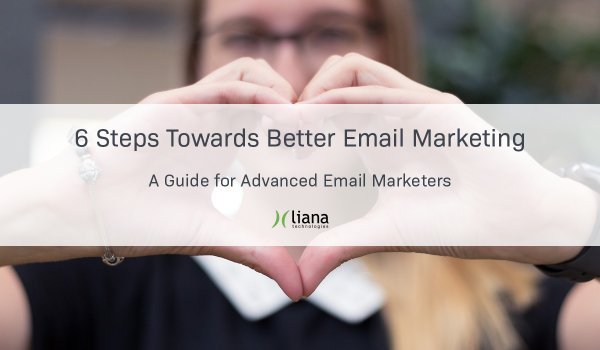Several email providers have strict filtering for spam messages. This is of course a good thing for email security, but it also means that your newsletter can easily end up in junk file or in the worst case, end up being blocked completely by the receiving server.
Improving open and click-through rates of your emails helps to improve your credibility in the eyes of email providers, but solving the case might require some bigger actions.
The reason to be filtered as junk mail is often due to incomplete identification of the sending address, and inconsistencies between the sender and the content (links) of the message.
In this article, we tell how you can secure the safe delivery for your newsletters with DKIM and SPF. If these abbreviations seem cryptic, don't worry – you'll soon learn the meaning of them.
Send safe newsletters with DKIM and SPF
DKIM and SPF play a major role in newsletter authentication. The basic purpose of them is to verify and authenticate the sender of the email, so no one else can for example send messages on your behalf.
What is DKIM?
DKIM (DomainKeys Identified Mail) verifies the identity of the email sender. With DKIM verification, an email client (like Gmail and Outlook, for example) can recognize if the incoming email is actually from you or not.
DKIM also helps to block spam and prevent other abuse of messages, such as phishing.
How DKIM works?
DKIM adds a digital signature to the header of your email. This happens by using a pair of two types of encryption keys.
A private key adds an encrypted signature header to all outgoing messages sent from your newsletter tool. Every domain has its own unique private key.
A public key is added to your Domain Name System (DNS) record. The recipient server uses the public key to verify the source of the message by decrypting the hidden signature from the header of the message. It recognizes if the message is coming from you and if the content of the message has been modified.
Once the recipient server has verified the signature, the message passes DKIM and is considered authentic.
Why should I use DKIM?
With DKIM verification your emails are less likely to be categorized as junk or spam – assuming, of course, that the content of the message itself is not spammy. Having DKIM in use also makes spoofing and phishing your emails easier to avoid, as missing DKIM is an indication that the mail is probably forged.
Another significant benefit of DKIM is that it enables the receiving server to ensure that the content of the email is not altered along the way.
In the long run, using DKIM improves the sending reputation of your domain because your emails will arrive as they should and the receivers don't need to worry about opening or clicking the messages.
What is SPF?
SPF (Sender Policy Framework) is an email authentication that determines which servers can use the sender's domain as delivery addresses. If messages are tried to be sent on behalf of the same senders from other servers, the messages are likely to be classified as spam.
SPF helps to ensure correct delivery for your emails and prevents spammers forging your domain for malicious purposes, such as sending hoaxes or spreading false information.
How SPF works?
First, a domain administrator creates an SPF record by publishing a policy that defines which mailing servers are authorized to send email behalf that domain. The record will be listed into the domain’s DNS record.
When an incoming email is arriving at the receiving mail server, the server checks whether an SPF record is specified for the domain of the address. If the SPF record exists, it is checked whether the sending server used in the message is on the list of allowed senders. If the addresses don’t match, the message will be either redirected to junk mail or blocked completely.
Why should I use SPF?
A domain protected by SPF is less likely to be regarded as spam or to be blacklisted by spam filters. SPF is a simple but effective anti-spam system, as it prevents the use of forged "from" addresses – a technique that spammers often utilize.
If you don’t have SPF set on and you haven’t included your newsletter tool in your SPF, all of your emails won’t necessarily be delivered. The receiving mail server can’t verify that the message to be received is actually from you.
Do I need to use both DKIM and SPF?
DKIM and SPF do not replace each other as the ways they protect email security are different. DKIM does authentication based on the sender’s identity, whereas SPF recognizes the authorized servers.
Using both authentication protocols is especially important when sending transactional emails, as spoofers often pretend to send emails from a domain that belongs to a bank or a payment service.
Setting DKIM and SPF up takes only a little time, but the benefits can be enormous.
Things to consider when using DKIM and SPF
DKIM and SPF are significantly important for the delivery of the newsletter. A competent newsletter tool provider knows to remind the customer about these or even better, takes care of the matter on behalf of the client.
It is important to get confirmation from your newsletter tool provider if DKIM and SPF are set up on your account. A professional tool provider can advise and help make these settings, and for the IT department, it's usually a matter of minutes to get the job done. They also make sure that your settings are up-to-date if server standards change.
Does LianaMailer support DKIM and SPF?
Yes it does. We automatically send information about needed actions regarding DKIM and SPF for every Liana®Cloud Email Marketing user after their account is established.
Do you want to develop your email marketing even further?
Learn more about email marketing by downloading our free guide for advanced email marketers.




![How to Get Started with Podcasts? [Infographic]](/media/blog/podcast-article/cache/starting-your-own-podcast-article-cover-378x214,c.png)
Comment
Comments
No comments